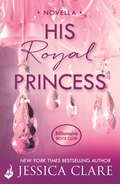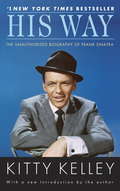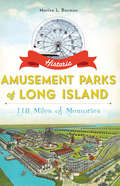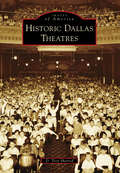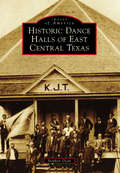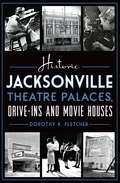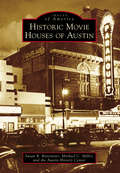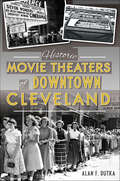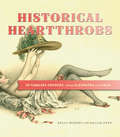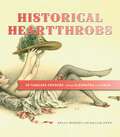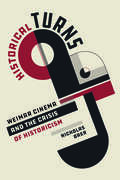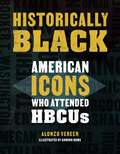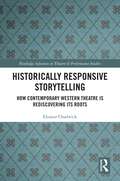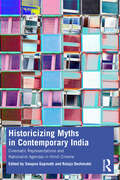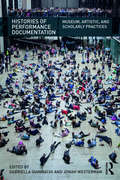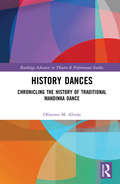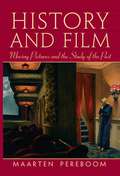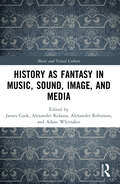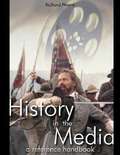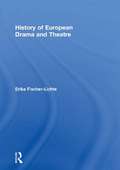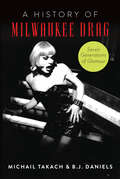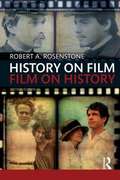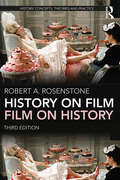- Table View
- List View
His Royal Princess: A Billionaire Boys Club Novella (Billionaire Boys Club)
by Jessica ClareFans of J.S. Scott, Louise Bay and Melody Anne - prepare to be dazzled by Jessica Clare's Billionaire Boys Club.The Billionaire Boys Club is a secret society of six incredibly wealthy men who have vowed success in business - at any cost. But success when it comes to love is a different matter...Their romance led to a royal wedding in Once Upon a Billionaire. Now see how it all began for Princess Alexandra of Bellissime and American actor Luke Houston.As heir to the throne of Bellissime, Princess Alexandra is supposed to be cool and calm...not crushing on a movie star. When she hears that Luke Houston is filming a scene for his next movie in her tiny country, however, she can't resist sneaking onto set to get a glimpse of the Hollywood hunk. When Alex is almost caught on set by the press, she ducks into the first available hiding place - only to find herself in Luke's private trailer, and getting much more than just a glimpse of him. It's an up close and personal encounter that sets her heart aflutter, and sets her mind on some very unladylike plans to get to know him better...Want more irresistible romance? Look for the rest of the Billionaire Boys Club titles, starting with Stranded With A Billionaire, as well as the sizzling spinoff series, Billionaires and Bridesmaids, starting with The Billionaire And The Virgin.
His Way
by Kitty Kelley#1 NEW YORK TIMES BESTSELLER * With a new Introduction by the author This is the book that Frank Sinatra tried--but failed--to keep from publication, and it's easy to understand why. This unauthorized biography goes behind the iconic myth of Sinatra to expose the well-hidden side of one of the most celebrated--and elusive--public figures of our time. Celebrated journalist Kitty Kelley spent three years researching government documents (Mafia-related material, wiretaps, and secret testimony) and interviewing more than 800 people in Sinatra's life (family, colleagues, law-enforcement officers, friends). The result is a stunning, often shocking exposé of a man as tortured as he was talented, as driven to self-destruction as he was to success. Featuring a new Introduction by the author, this fully documented, highly detailed biography--filled with revealing anecdotes--is the penetrating story of the explosively controversial and undeniably multitalented legend who ruled the entertainment industry for fifty years and continues to fascinate to this day. Praise for His Way "The most eye-opening celebrity biography of our time."--The New York Times "A compelling page-turner . . . Kitty Kelley's book has made all future Sinatra biographies virtually redundant."--Los Angeles Herald ExaminerFrom the Trade Paperback edition.
Historic Amusement Parks of Long Island: 118 Miles of Memories
by Marisa L. BermanWhen Long Island became a suburban paradise after World War II, ambitious entrepreneurs created dozens of amusement parks to help families unwind. The Nunley family built a park in Baldwin in 1939, and it was so successful that they opened Nunley's Happyland in Bethpage just a few years later. Westbury's Spaceland fascinated youngsters with dreams of becoming astronauts, and Frontier City in Amityville was heaven on earth to fans of the Wild West. Today, historic parks like Deno's Wonder Wheel Park in Coney Island and Adventureland in Farmingdale still delight children and remind parents of happy memories of their own. Local author Marisa Berman explores the decades of fun and laughter from Long Island's historic amusement parks.
Historic Dallas Theatres
by D. Troy SherrodDallas was the show business capital of Texas and much of the South throughout the 20th century. More than 100 theatres served the city's neighborhoods, and Elm Street once boasted more than 15 vaudeville and movie theatres--second in number to Broadway. The quality of the show houses in Dallas were surpassed by few cities and all major, and most minor, Hollywood studios maintained Dallas offices. Notable names figuring in this history include Margo Jones, "Blind" Lemon Jefferson, Karl Hoblitzelle, Baruch Lumet, Bob Hope, Greer Garson, Linda Darnell, Howard Hughes, Clyde Barrow, Gene Autry, Oliver Stone, Pappy Dolson, Jack Ruby, Lee Harvey Oswald, Nicola Rescigno, Don Henley, and Frank Lloyd Wright.
Historic Dance Halls of East Central Texas
by Stephen DeanTexas dance halls are iconic structures that have played a prominent role in the state's culture from its earliest stages. They became central institutions in the earliest European settlements and provided these immigrant communities with a common, central space in which to build new ways of life in a new land. The settlement patterns of the mostly German, Czech, Polish, and other central European migrants of this period gave East Central Texas the state's greatest concentration of dance halls. Thousands of these halls were built throughout the 19th and early 20th centuries, but at present, their numbers have dwindled considerably, and many are at risk.
Historic Jacksonville Theatre Palaces, Drive-ins and Movie Houses (Landmarks)
by Dorothy K. FletcherJacksonville's theatre and performance history is rich with flair and drama. The theatres, drive-ins and movie houses that brought entertainment to its citizens have their own exciting stories. Some have passed into memory. The Dixie Theatre, originally part of Dixieland Park, began to fade in 1909. The Palace Theatre, home to vaudeville acts, was torn down in the '50s. The Alhambra has been everyone's favorite dinner theatre since 1967's debut of Come Blow Your Horn. Local author Dorothy K. Fletcher revives the history of Jacksonville's theatres. Lights, camera, action!
Historic Movie Houses of Austin (Images of America)
by Austin History Center Michael C. Miller Susan RittereiserMotion pictures came to Austin on October 10, 1896, debuting at the Hancock Opera House. Since then, movies have continued to enchant, entertain, and inform the citizens of the capital of Texas. And, the places--the movie houses and theaters--where people saw motion pictures played just as important a role in the moviegoing experience as the movies themselves. As the city's population grew and motion picture technology changed, so too did Austin's movie houses, from the first kinetoscope parlor on Congress Avenue to the city' s first four-plex, the Aquarius 4, in southeast Austin. While most of these places are long gone, some withstood the test of time and are still showing movies or have been repurposed for other uses. Through the rich archival collections of the Austin History Center, Historic Movie Houses of Austin explores the stories of these important historic spaces and of the lives of those who were connected with them.
Historic Movie Theaters of Downtown Cleveland (Landmarks)
by Alan F. DutkaThe first movie theaters in Cleveland consisted of converted storefronts with sawed-off telephone poles substituting for chairs and bedsheets acting as screens. In 1905, Clevelanders marveled at moving images at Rafferty's Monkey House while dodging real monkeys and raccoons that wandered freely through the bar. By the early 1920s, a collection of marvelous movie palaces like the Stillman Theater lined Euclid Avenue, but they survived for just two generations. Clevelanders united to save the State, Ohio and Allen Theaters, among others, as wrecking balls converged for demolition. Those that remain compose one of the nation's largest performing arts centers. Alan F. Dutka shares the remarkable histories of Cleveland's downtown movie theaters and their reemergence as community landmarks.
Historical Heartthrobs
by Kelly Murphy Hallie FrydHistory is about much more than dusty books, dreary dates, and long-forgotten battles. History is also about sex appeal! Historical Heartthrobs compiles photos and life stories of 50 of the sexiest men and women from history and asks the essential question: Would you really want to date them? Consider George Sand, for instance. She was the hottest thing in pants in nineteenth-century France, but would you really want to put up with all that smoking? Or what about Nikola Tesla? His utter brilliance made Victorians swoon, but he seemed incapable of swooning back. Would you endure his indifference in return for that incredible smile? Each entry in Historical Heartthrobs includes a full-page photo, contemporary quotes, and an in-depth explanation of who these people were, why they mattered, and how they managed to be so seductive. Entries also include: Vital stats about the hottie's place of birth, lifespan, and major areas of influence. The inside scoop on peccadilloes, noteworthy liaisons, and long-standing relationships. An overall heat reading that factors in sex appeal, charisma, accomplishments, and of course, moral virtue. (Points are docked for brutality and rudeness!) Everyone included here made their mark on the world--but not everyone did so in an equally admirable fashion. John Wilkes Booth was definitely good-looking, but racist assassins don't generally make for the best life partners. Nellie Bly, on the other hand, did more in her average year than most people do in a lifetime--and she happened to look like a model, too. So review their records, check out their photos, and choose the hottie who makes you swoon.
Historical Heartthrobs: 50 Timeless Crushes — From Cleopatra to Camus
by Kelly Murphy Hallie FrydThis book compiles photos and life stories of fifty of the sexiest men and women from history and asks the essential question: Would you really want to date them? Some are artists, some are scientists, and many are political or military leaders, but all have had a lasting impact on human life—and a sizable impact on their admirers as well. Each entry describes the period in which the heartthrob lived and includes essential stats, hilarious sidebars, and, of course, a "crushability" ranking: a measurement of how crush-worthy these people really are, based on their relative levels of heroism (or villainy).
Historical Turns: Weimar Cinema and the Crisis of Historicism
by Nicholas BaerHistorical Turns reassesses Weimar cinema in light of the "crisis of historicism" widely diagnosed by German philosophers in the early twentieth century. Through bold new analyses of five legendary works of German silent cinema—The Cabinet of Dr. Caligari, Destiny, Rhythm 21, The Holy Mountain, and Metropolis—Nicholas Baer argues that films of the Weimar Republic lent vivid expression to the crisis of historical thinking. With their experiments in cinematic form and style, these modernist films revealed the capacity of the medium to engage with fundamental questions about the philosophy of history. Reconstructing the debates over historicism that unfolded during the initial decades of moving-image culture, Historical Turns proposes a more reflexive mode of historiography and expands the field of film and media philosophy. The book excavates a rich archive of ideas that illuminate our own moment of rapid media transformation and political, economic, and environmental crises around the globe.
Historically Black: American Icons Who Attended HBCUs
by Alonzo VereenA vibrant collection of biographies and illustrated portraits that capture the brilliance of more than thirty American icons, Historically Black is a celebration of Black excellence in fields ranging from politics to STEM, sports to pop culture, and more.From the moment the first HBCU was founded in 1837, Black Americans from all walks of life have created collegiate experiences that enrich and transcend mainstream postsecondary education. Today, more than 100 colleges and universities are registered under the HBCU banner and over 200,000 students are enrolled. With a legacy of marching bands, drill teams, choral ensembles, homecoming, and more, attending an HBCU is an emblem of pride and a source of joy. Historically Black documents not only HBCU cultural traditions but also the remarkable stories of former students. HBCU attendees in the book include: Booker T. Washington, James Weldon Johnson, Ida B. Wells-Barnett, W.E.B. Du Bois, Mary McLeod Bethune, Alice Dunbar Nelson, Zora Neale Hurston, Howard Thurman, Langston Hughes, Thurgood Marshall, Bayard Rustin, Dorothy Vaughan, Katherine Johnson, Mary Jackson, Leontyne Price, Martin Luther King, Jr., Toni Morrison, John Lewis, Bob Hayes, Oprah Winfrey, Kamala Harris, Hakeem M. Oluseyi, Taraji P. Henson, Erykah Badu, Stacey Abrams, Ta-Nehisi Coates, Chadwick Boseman, Hebru Brantley, Ibram X. Kendi, J.R. Smith, Megan Thee Stallion, and Mo&’ne Davis.
Historically Responsive Storytelling: How Contemporary Western Theatre is Rediscovering its Roots (Routledge Advances in Theatre & Performance Studies)
by Eleanor ChadwickThis book explores the notion that the emergent language of contemporary theatre, and more generally of modern culture, has links to much earlier forms of storytelling and an ancient worldview. This volume looks at our diverse and amalgamative theatrical inheritance and discusses various practitioners and companies whose work reflects and recapitulates ideas, approaches, and structures original to theatre’s ritual roots. Drawing together a range of topics and examples from the early Middle Ages to the modern day, Chadwick focuses in on a theatrical language which includes an emphasis on the psychosomatic, the non-linear, the symbolic, the liminal, the collective, and the sacred. This interdisciplinary work draws on approaches from the fields of anthropology, philosophy, historical and cognitive phenomenology, and neuroscience, making the case for the significance of historically responsive modes in theatre practice and more widely in our society and culture.Eleanor
Historicizing Myths in Contemporary India: Cinematic Representations and Nationalist Agendas in Hindi Cinema
by Swapna Gopinath Rutuja DeshmukhThis book examines cinematic practices in Bollywood as narratives that assist in shaping the imagination of the age, especially in contemporary India. It examines historical films released in India since the new millennium and analyses cinema as a reflection of the changing socio-political and economic conditions at any given period. The chapters in Historicizing Myths in Contemporary India: Cinematic Representations and Nationalist Agendas in Hindi Cinemas also illuminate different perspectives on how cinematic historical representations follow political patterns and market compulsions, giving precedence to a certain past over the other, creating a narrative suited for the dominant narrative of the present. From Mughal-e-Azam to Padmaavat, and Bajirao Mastani to Raazi, the chapters show how creating history out of myths validate hegemonic identities in a rapidly evolving Indian society. The volume will be of interest to scholars of film and media studies, literature and culture studies, and South Asian studies.
Histories of Performance Documentation: Museum, Artistic, and Scholarly Practices
by Gabriella Giannachi Jonah WestermanHistories of Performance Documentation traces the many ways in which museums have approached performance works from the 1960s onwards, considering the unique challenges of documenting live events. From hybrid and interactive arts, to games and virtual and mixed reality performance, this collection investigates the burgeoning role of the performative in museum displays. Gabriella Giannachi and Jonah Westerman bring together interviews and essays by leading curators, conservators, artists and scholars from institutions including MoMA, Tate, SFMOMA and the Whitney, to examine a range of interdisciplinary practices that have influenced the field of performance documentation. Chapters build on recent approaches to performance analysis, which argue that it should not focus purely on the live event, and that documentation should not be read solely as a process of retrospection. These ideas create a radical new framework for thinking about the relationship between performance and its documentation—and how this relationship might shape ideas of what constitutes performance in the first place.
History Dances: Chronicling the History of Traditional Mandinka Dance (Routledge Advances in Theatre & Performance Studies)
by Ofosuwa M. AbiolaThe field of history is founded on the interrogation of written documents from the past. However, culture is the center of life in Africa. As a result, in the past – and to a degree in the present – the process for documenting events in Africa was not written, it was performed. History Dances: Chronicling the History of Traditional Mandinka Dance argues that a wealth of information is housed within traditional Mandinka dance and, consequently, the dances can be used as an African-derived primary source for writing African history. Ofosuwa M. Abiola highlights the overall value of studying Mandinka dance history specifically, and African dance history generally, as well as addressing the issue of scarcity with regard to primary sources for writing African history. History Dances proves to be a vital read for both undergraduate students and scholars in the fields of dance history, African history, performance studies, and cultural anthropology.
History and Film: Moving Pictures and the Study of the Past
by Maarten PereboomThe ability to view recorded moving pictures has had a major impact on human culture since the development of the necessary technologies over a century ago. For most of this time people have gone to the movies to be entertained and perhaps edified, but in the meantime television, the videocassette recorder (VCR), the digital versatile disk (DVD) player, the personal computer (desktop and laptop), the internet and other technologies have made watching moving pictures possible at home, in the classroom and just about anywhere else. Today, moving images are everywhere in our culture. Every day, moving picture cameras record millions of hours of activity, human and otherwise, all over the world: your cell phone makes a little video of your friends at a party; the surveillance camera at the bank keeps on eye on customers; journalists’ shoulder-carried cameras record the latest from the war zone; and across the world film artists work on all kinds of movies, from low-budget independent projects to the next big-budget Hollywood blockbuster. Moving pictures have had a great influence on human culture, and this book focuses on using moving images as historical evidence. Studying history means examining evidence from the past to understand, interpret and present what has happened in different times and places. We talk and write about what we have learned, hoping to establish credibility both for what we have determined to be the facts and for whatever meaning or significance we may attach to our reconstruction of the past. Studying history is a scientific process, involving a fairly set methodology. We tend to favor written sources, and we have tended to favor writing as a means of presenting our views of the past. But historians also use all kinds of other documents and artifacts in their work of interpreting the past, including moving pictures.
History as Fantasy in Music, Sound, Image, and Media (Music and Visual Culture)
by James Cook, Alexander Kolassa, Alexander Robinson, and Adam WhittakerExploring how music is used to portray the past in a variety of media, this book probes the relationship between history and fantasy in the imagination of the musical past. The volume brings together essays from multidisciplinary perspectives, addressing the use of music to convey a sense of the past in a wide range of multimedia contexts, including television, documentaries, opera, musical theatre, contemporary and historical film, videogames, and virtual reality. With a focus on early music and medievalism, the contributors theorise the role of music and sound in constructing ideas of the past. In three interrelated sections, the chapters problematise notions of historical authenticity on the stage and screen; theorise the future of musical histories in immersive and virtual media; and explore sound’s role in more fantastical appropriations of history in television and videogames. Together, they poseprovocative questions regarding our perceptions of ‘early’ music and the sensory experience of distant history. Offering new ways to understand the past at the crossroads of musical and visual culture, this collection is relevant to researchers across music, media, and historical and cultural studies.
History in the Media: Film and Television
by Robert NiemiAimed at general readers, this text considers the relationship between Hollywood and history from the invention of moving pictures to the present. Niemi (American studies, St. Michael's College, Vermont) examines more than 350 movies that are based on actual events and analyzes how the film treatment of topics such as baseball, the Civil War, and punk rock have changed over time to reflect prevalent cultural attitudes. Coverage includes both docudramas and documentaries.
History of Dance
by Gayle KassingHistory of Dance, Second Edition, offers readers a panoramic view of dance from prehistory to the present. The text covers the dance forms, designs, artists, costumes, performing spaces, and accompaniments throughout the centuries and around the globe. Its investigative approach engages students in assignments and web projects that reinforce the learning from the text, and its ancillaries for both teachers and students make it easy for students to perceive, create, and respond to the history of dance.
History of European Drama and Theatre
by Erika Fischer-LichteThis major study reconstructs the vast history of European drama from Greek tragedy through to twentieth-century theatre, focusing on the subject of identity. Throughout history, drama has performed and represented political, religious, national, ethnic, class-related, gendered, and individual concepts of identity. Erika Fischer-Lichte's topics include: * ancient Greek theatre* Shakespeare and Elizabethan theatre by Corneilli, Racine, Molière* the Italian commedia dell'arte and its transformations into eighteenth-century drama* the German Enlightenment - Lessing, Schiller, Goethe, and Lenz* romanticism by Kleist, Byron, Shelley, Hugo, de Vigny, Musset, Büchner, and Nestroy* the turn of the century - Ibsen, Strindberg, Chekhov, Stanislavski* the twentieth century - Craig, Meyerhold, Artaud, O'Neill, Pirandello, Brecht, Beckett, Müller. Anyone interested in theatre throughout history and today will find this an invaluable source of information.
History of Milwaukee Drag, A: Seven Generations of Glamour (American Heritage)
by Michail Takach BJ Danielsp>The queens that made Milwaukee famousFor over a century, drag has been an unstoppable force in Milwaukee nightlife. On June 7, 1884, "The Only Leon" brought the fine art of female impersonation to the Grand Opera Hall, launching a proud local legacy that continues today at This Is It, La Cage, Hamburger Mary's, D.I.X. and innumerable other venues.Historians Michail Takach and BJ Daniels recognize that today's LGBTQ liberties were born from the strength, resilience, and resistance of yesterday's gender non-conforming pioneers. This is a long overdue celebration of those stories, including high-rolling hustler of the Fourth Ward "Badlands" Frank Blunt, over-the-top dinner theater drag superstar of the 1950s Adrian Ames, and "It Kid" Jamie Gays, first-ever Miss Gay Milwaukee and Latin community hero.And many, many more.
History of Rock and Roll
by Thomas E. LarsonThis book was written by a college professor who teaches a class about the history and evolution of rock music over the past 55 years. Each chapter discusses an ear in rock history, pointing out the influences that shaped it and featuring key artists from that period. The book is rich in content and is so entertaining that you might forget it's a textbook until you see the study questions at the end of each chapter. The author provides suggestions for listening to songs that help you get an idea of the style he is describing.
History on Film/Film on History
by Robert A. RosenstoneHistory on Film/Film on History demonstrates how films can be analyzed as historical sources. It offers undergraduates an introduction to some of the first issues involved with studying historical films. Rosenstone argues that to leave history films out of the discussion of the meaning of the past is to ignore a major factor in our understanding of past events. He examines what history films convey about the past and how they convey it, demonstrating the need to learn how to read and understand this new visual world. This new edition places this 'classic' text in the context of work done elsewhere in the field over the ten years since this book first published, and help to renew the title for a new generation of undergraduates.
History on Film/Film on History (History: Concepts,Theories and Practice)
by Robert A. RosenstoneHistory on Film/Film on History has established itself as a classic treatise on the historical film and its role in bringing the past to life. In the third edition of this widely acclaimed text, Robert A. Rosenstone argues that to leave history films out of the discussion of the meaning of the past is to ignore a major means of understanding historical events. This book examines what history films convey about the past and how they convey it, demonstrating the need to learn how to read and understand this new visual world and integrating detailed analysis of films such as Schindler’s List, Glory, October, and Reds. Advocating for the dramatic feature as a legitimate way of doing history, this edition includes a new introduction, a revised final chapter, a new epilogue that discusses recent history films such as Selma and The Imitation Game, and an extensive and updated guide to further reading. Examining the codes and conventions of how these films tell us about the past and providing guidance on how to effectively analyse films as historical interpretations, this book is an essential introduction to the field for students of history and film.
